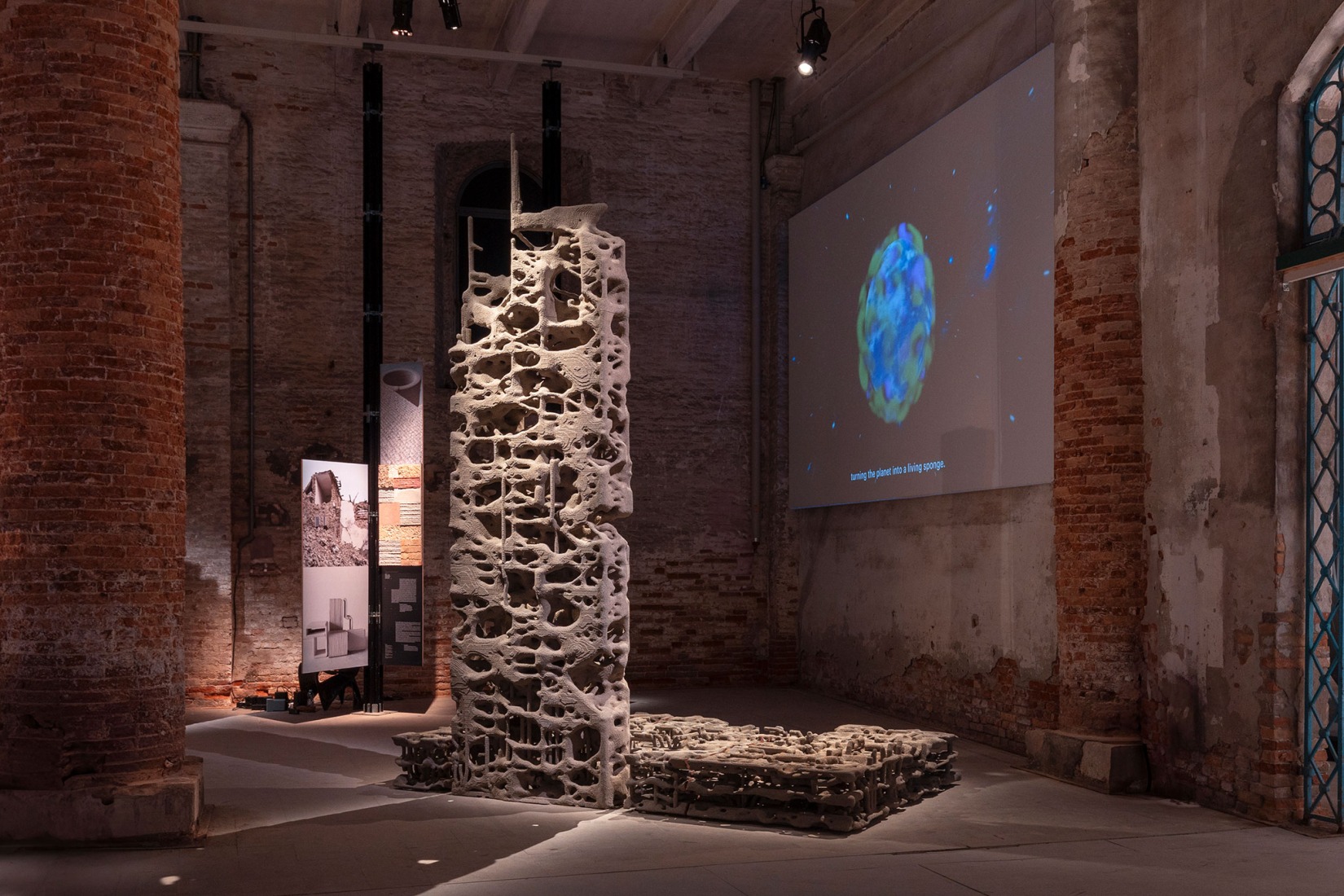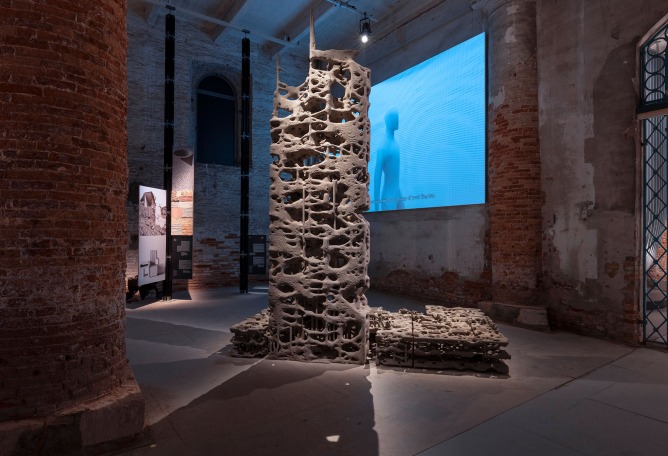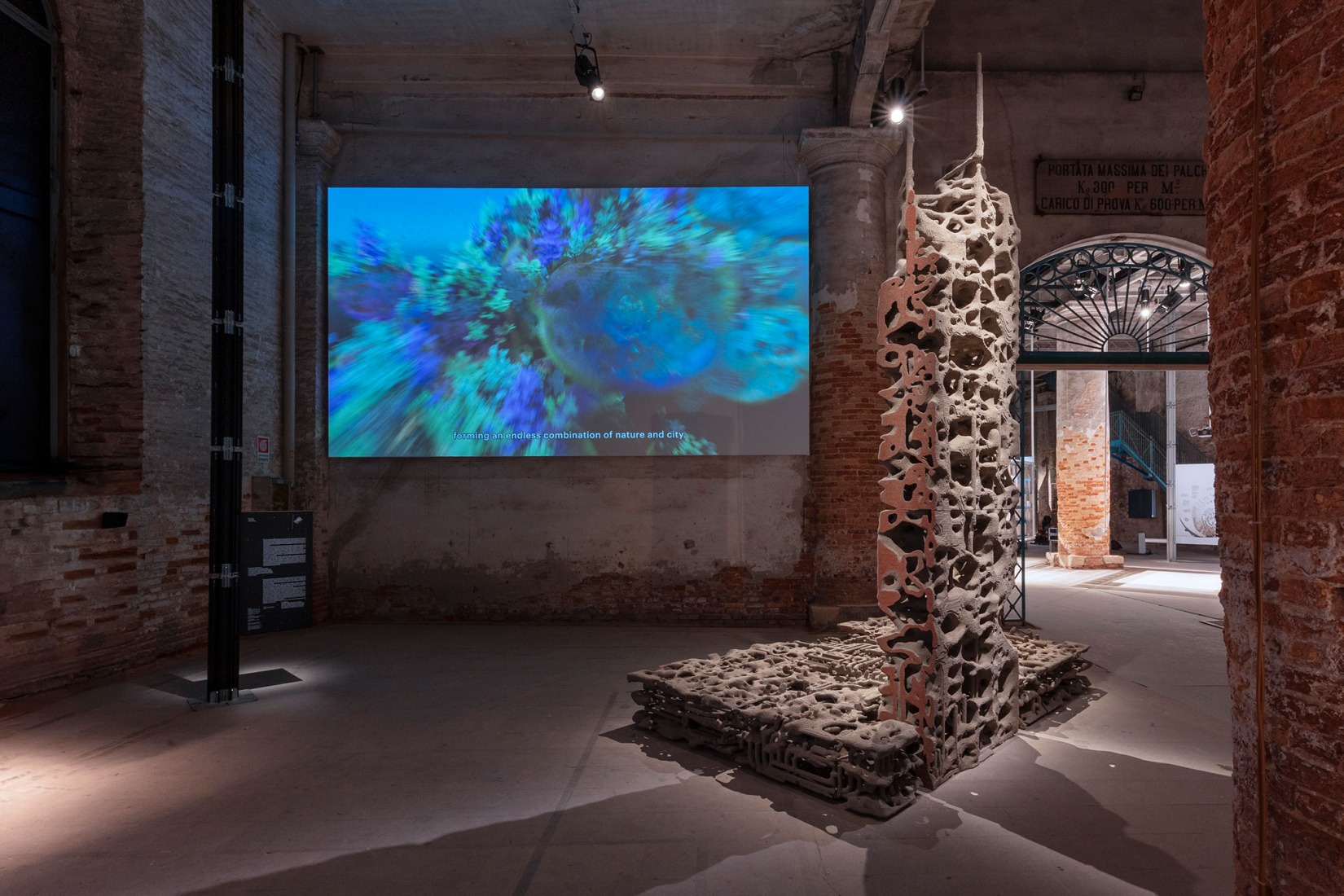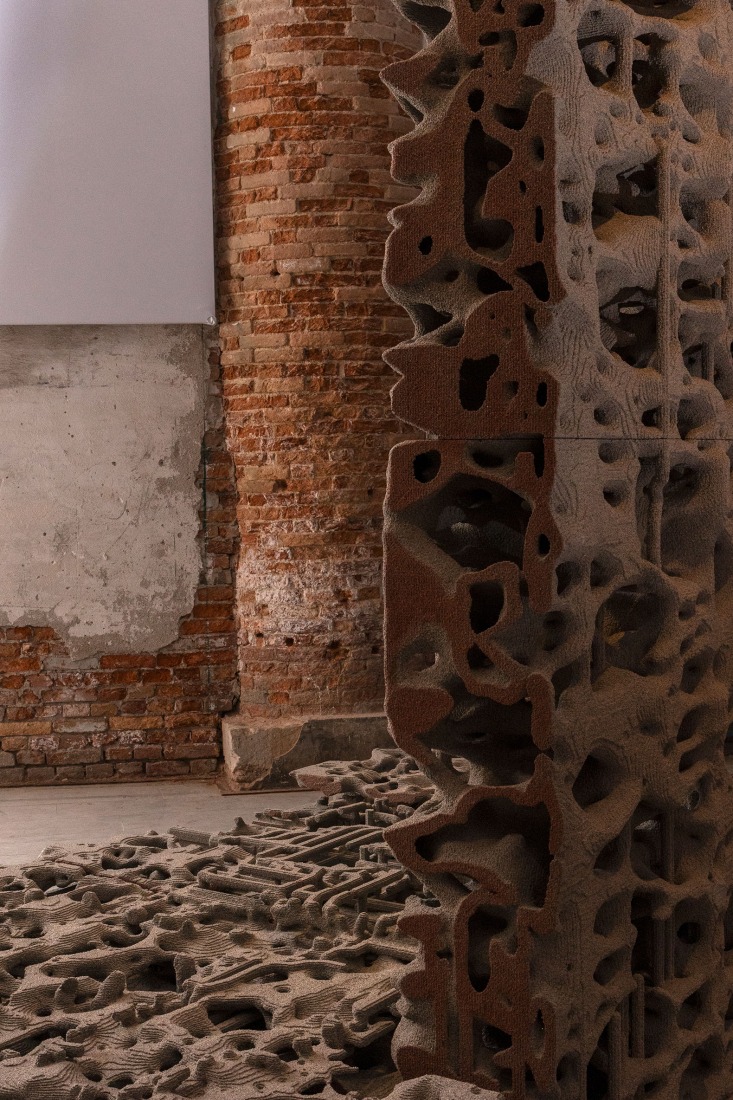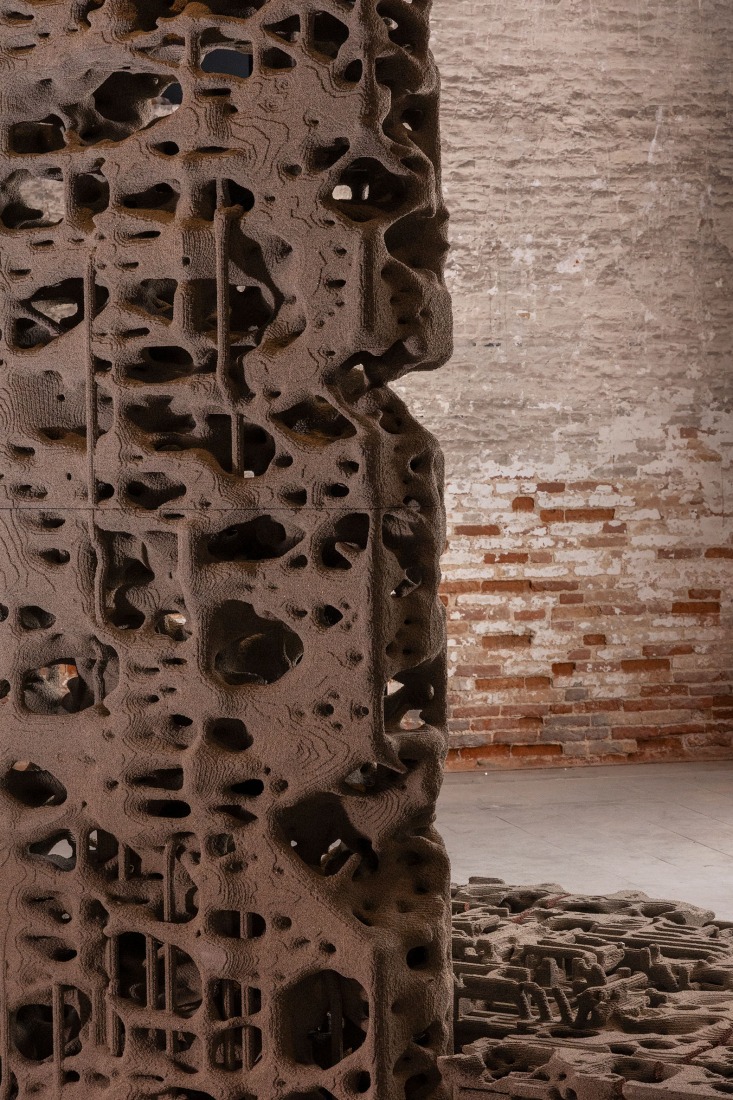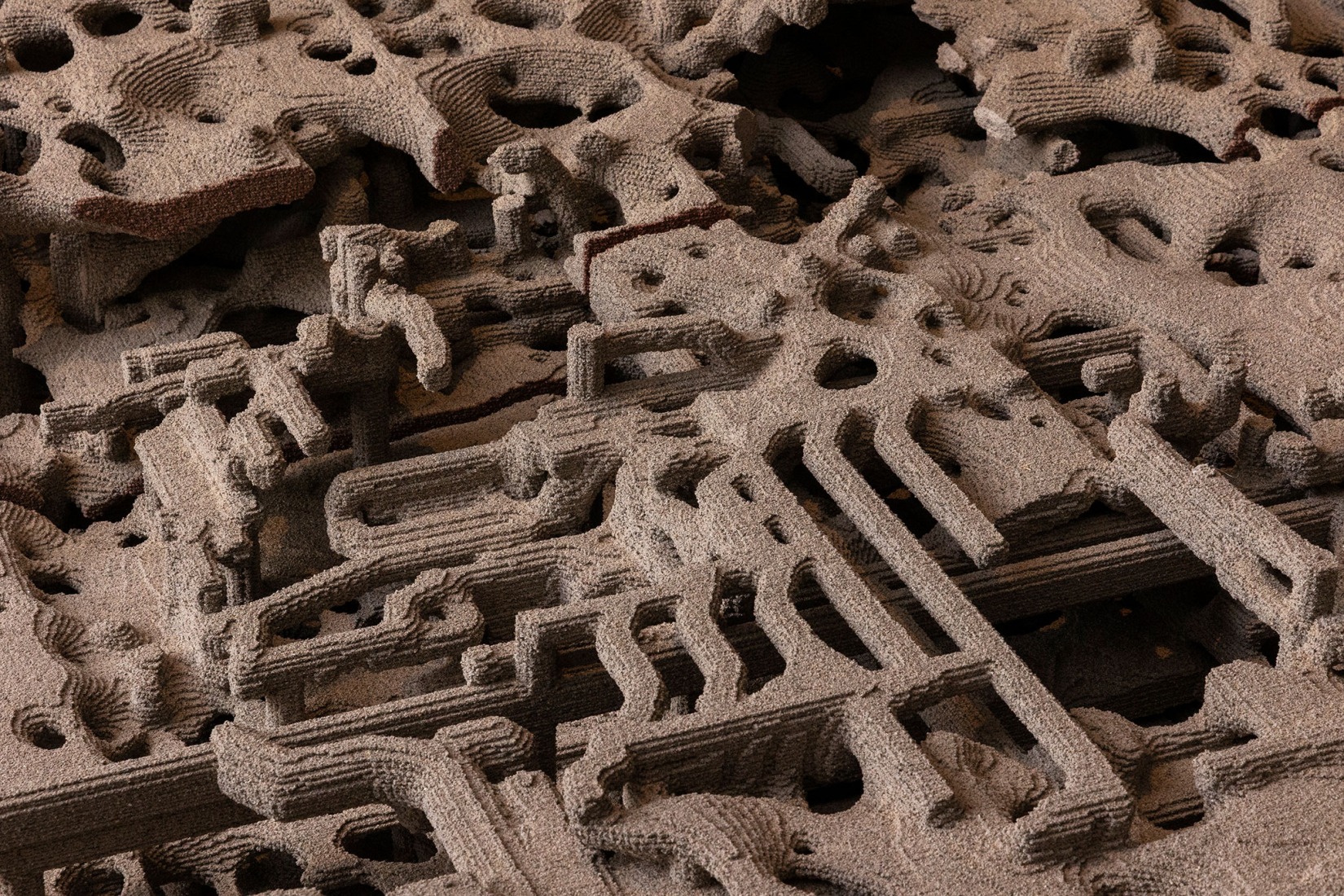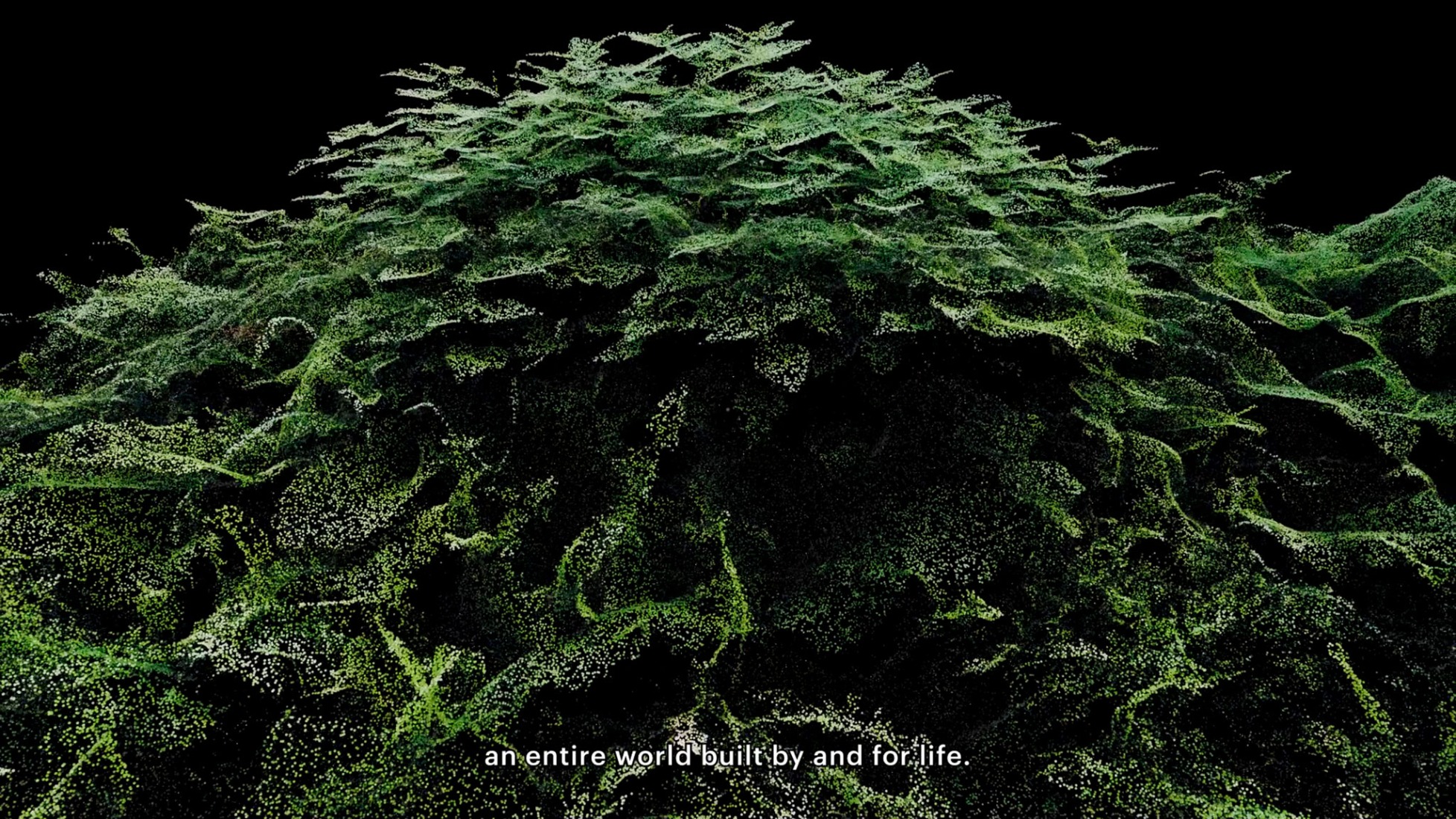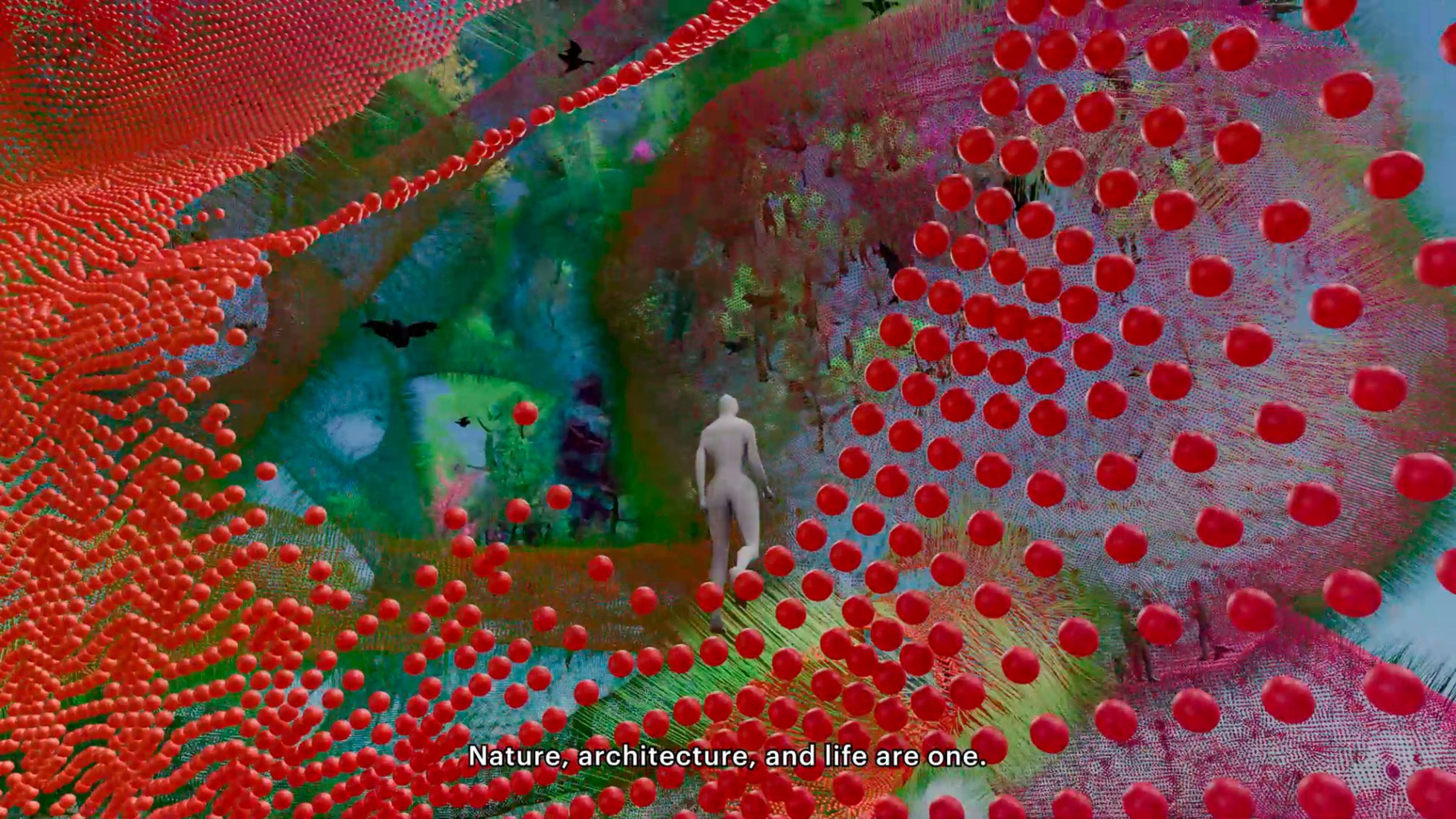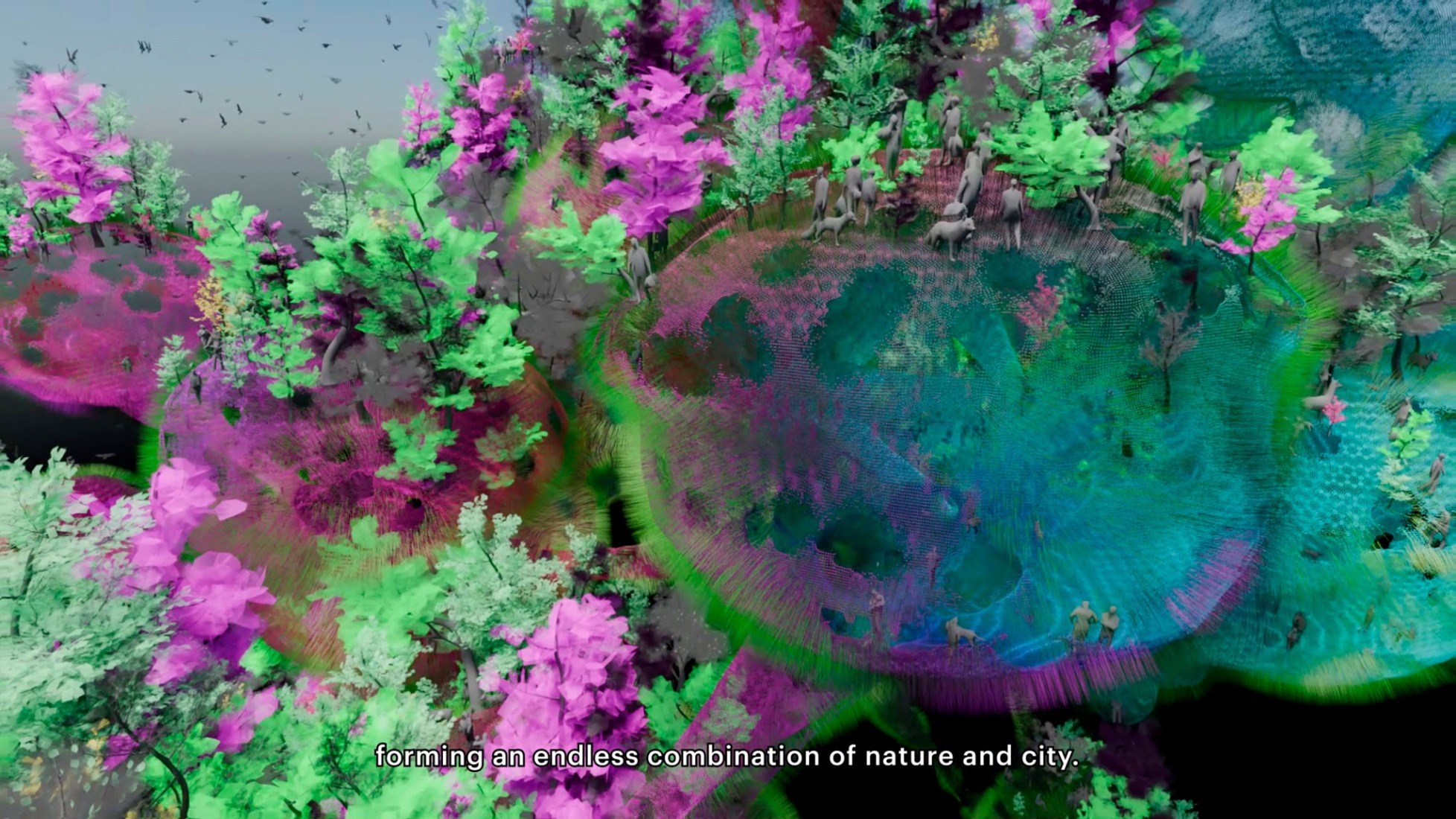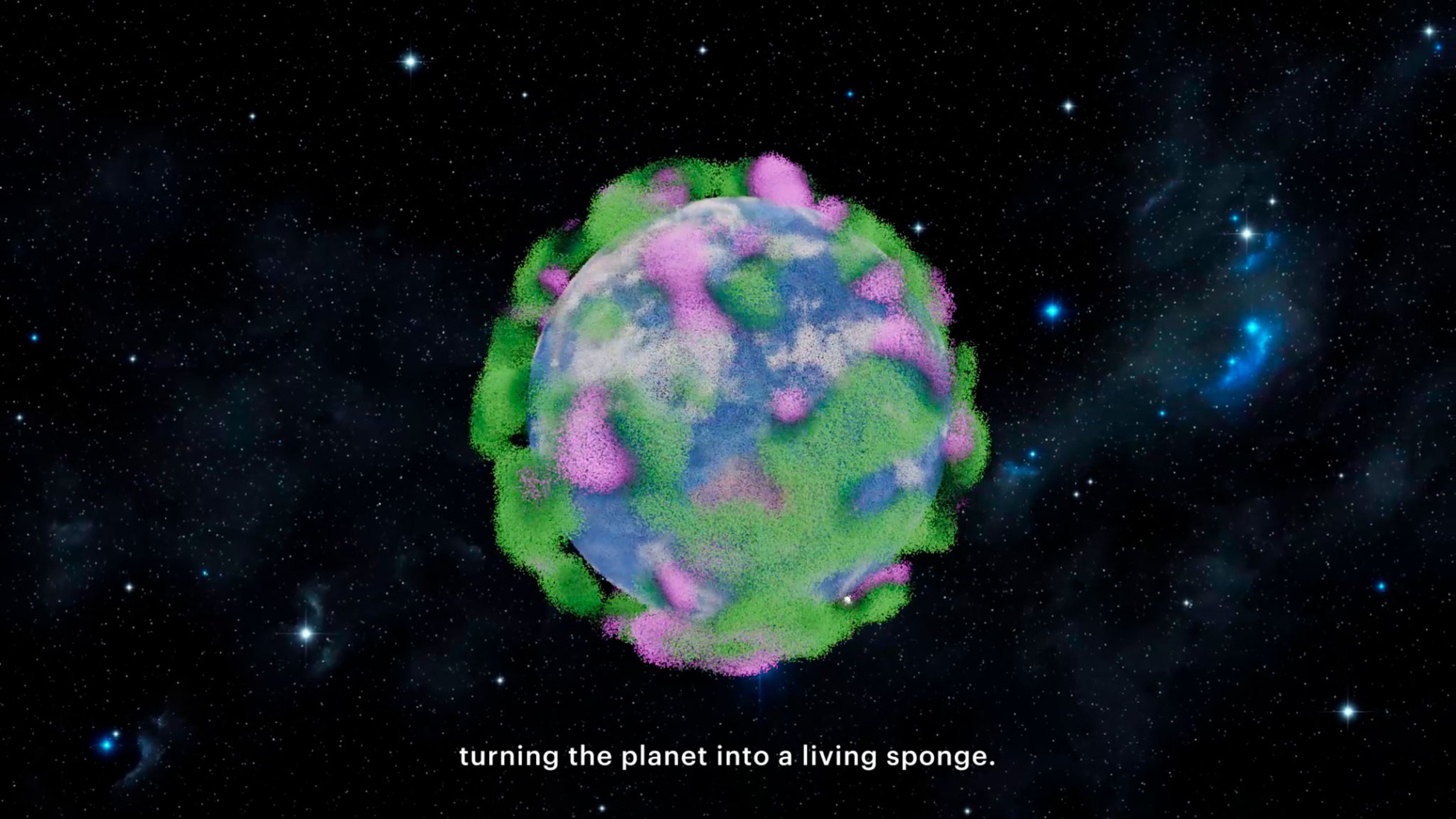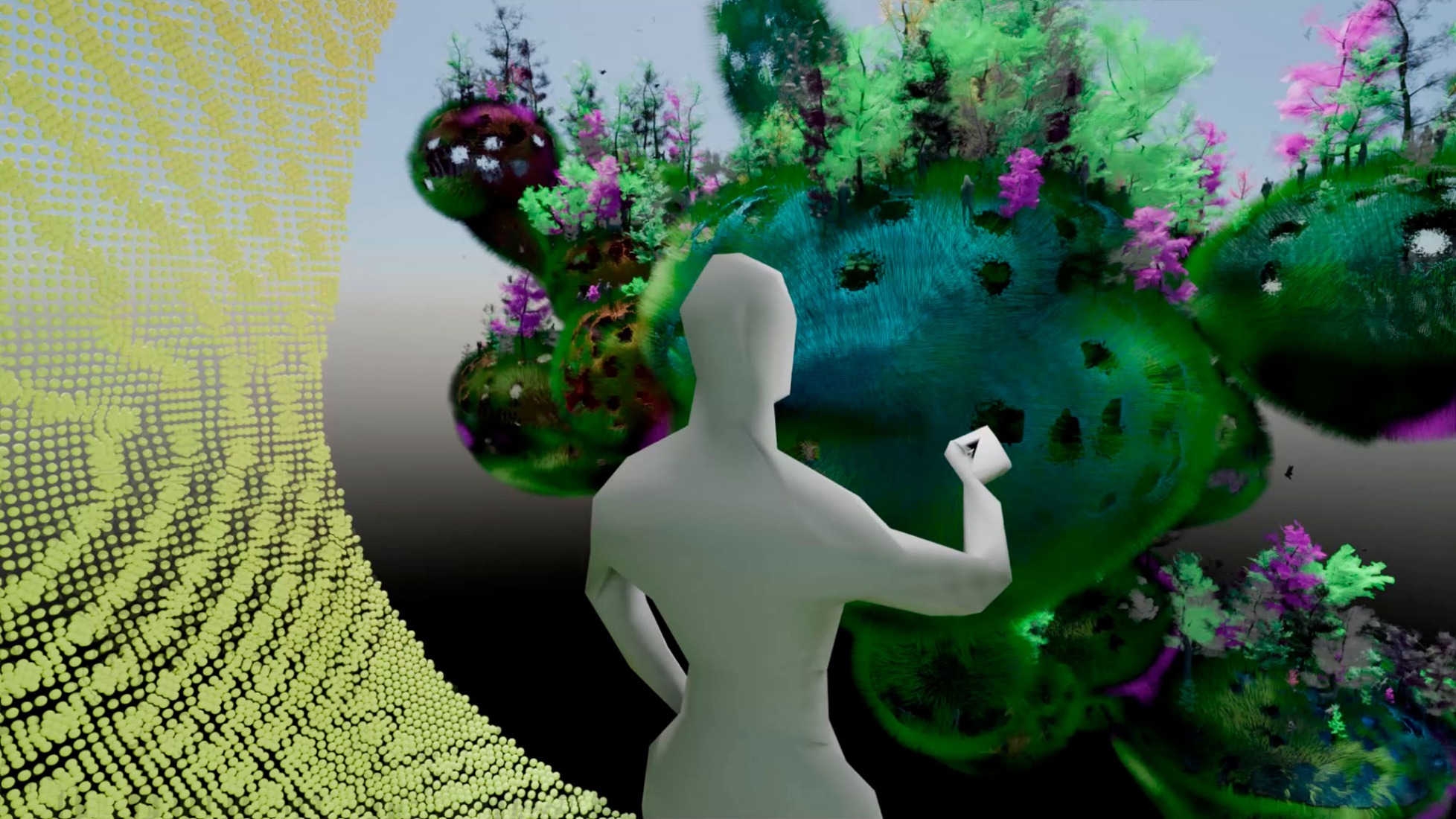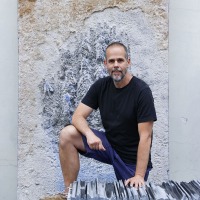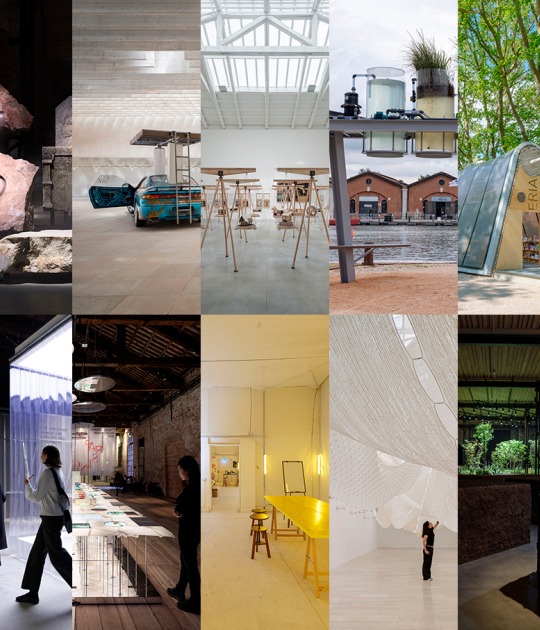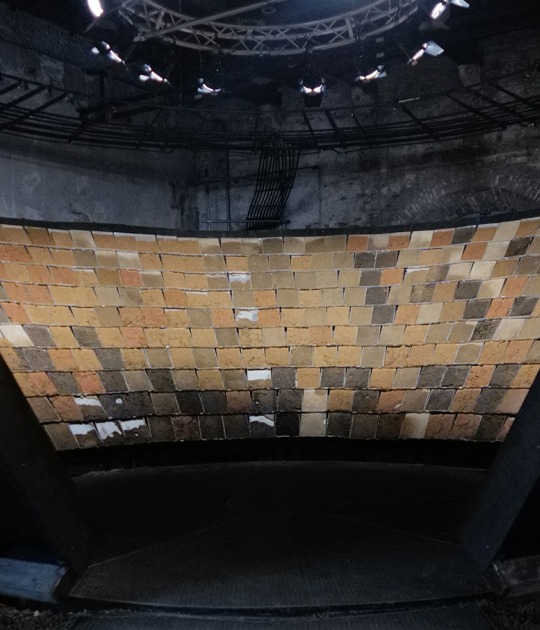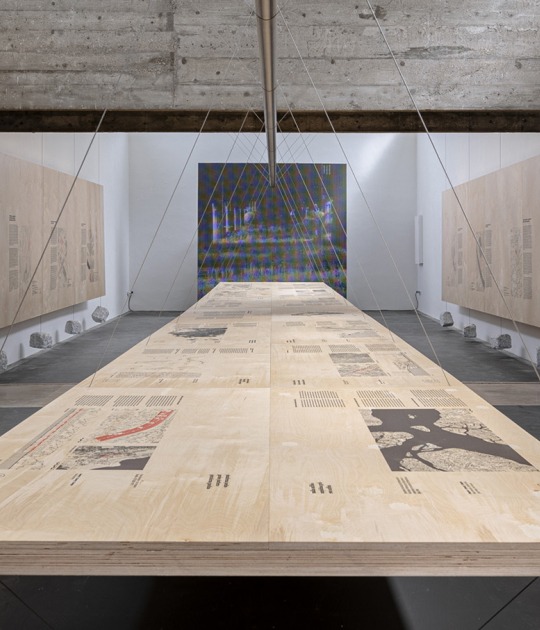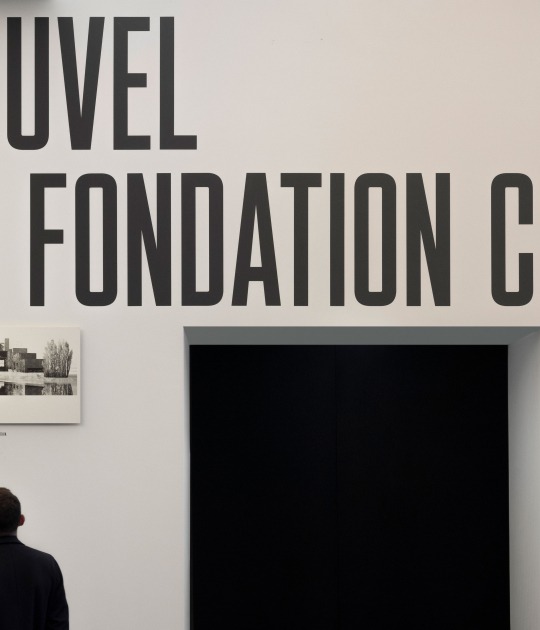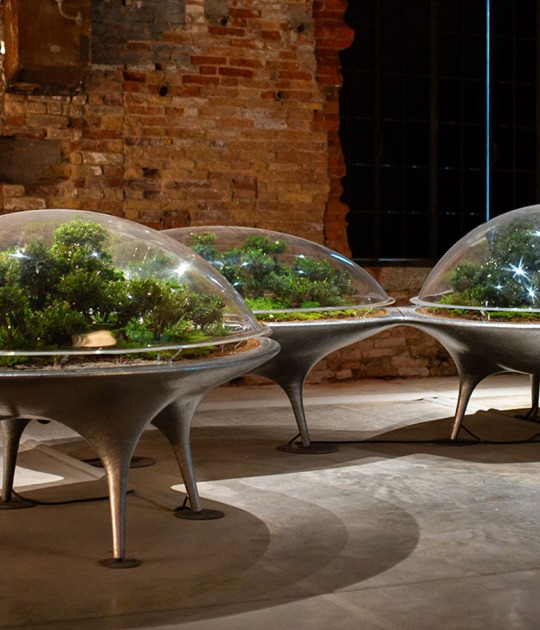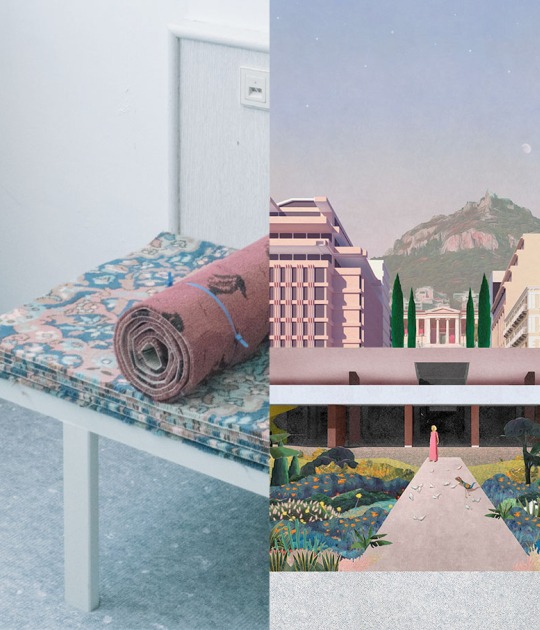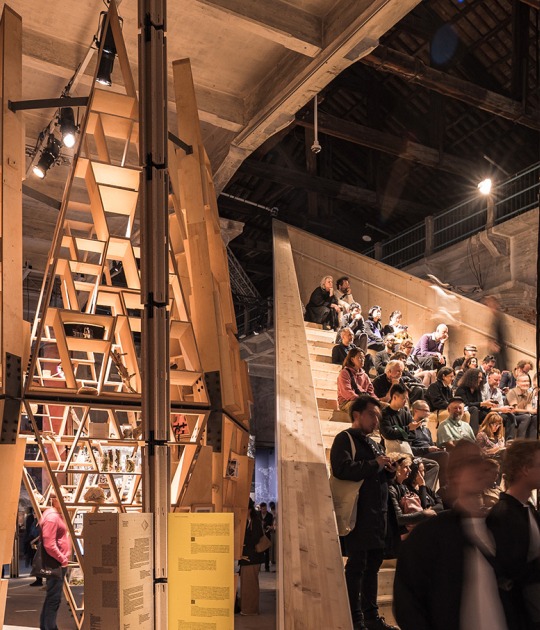MVRDV and Federico Diaz are exhibiting at La Bienale di Venezia a proposal capable of turning cities into forests where there is no artificial light and where all the materials are of natural origin, thus generating a dynamic architecture full of water and biomaterial that regenerates itself as it grows. Hence the name of the Biotopia project, providing a solution to the current problem of creating a sustainable home for all humans and species that inhabit the world.
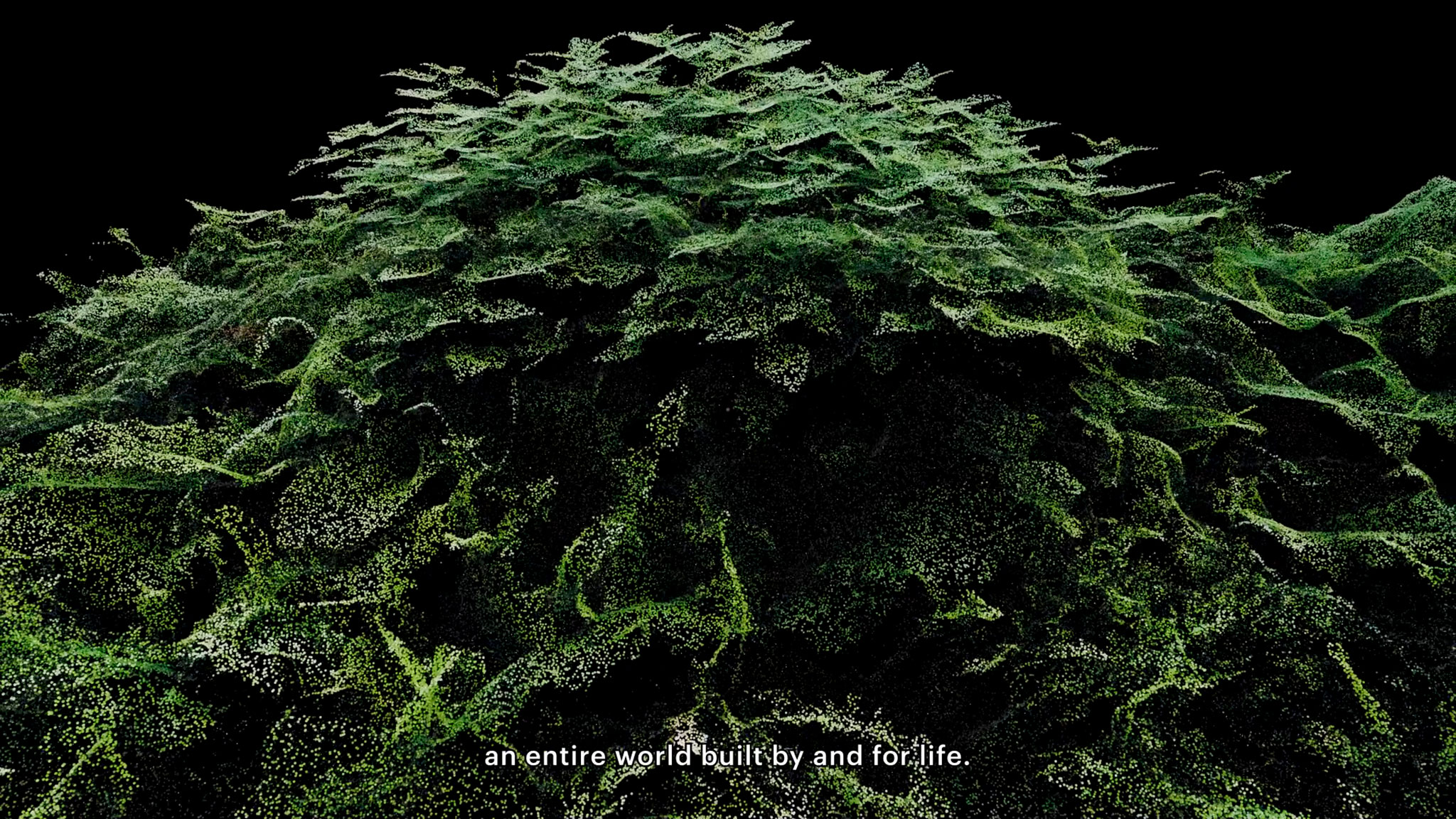
Biotopia: Propagative Structures by MVRDV. Photography by The Why Factory.
The film, which is directed by Winy Maas and produced by The Why Factory, shows a novel vision of architecture outside the traditional framework, using biology, technology and collective intelligence. It creates self-sustainable systems where architecture is perfectly integrated with nature and generates no waste due to its constant regeneration.
“Today, more than ever, everything is biology. Everything is nature.” “What can we innovate, technically and spatially? How can natural sciences, automation, nanomaterials, robotics, biotechnology, or biomimicry contribute to establishing new relationships among humans and all other living organisms? Let’s invent and dream. Let’s imagine Biotopia.”
Winy Maas.

Biotopia: Propagative Structures by MVRDV. Photography by The Why Factory.
The sculpture, under the name of Propagative Structures by visual artist Federico Diaz, is inspired by the roots of mangroves, showing how the structures can grow and behave like a living organism.
“We are not designing finished objects—we are initiating life processes.” “Propagative Structures explores architecture as something that grows, adapts, and eventually decomposes, just like living organisms. In this way, the built environment becomes a partner in the metabolic flows of the planet, not a disruption.”
Federico Díaz.
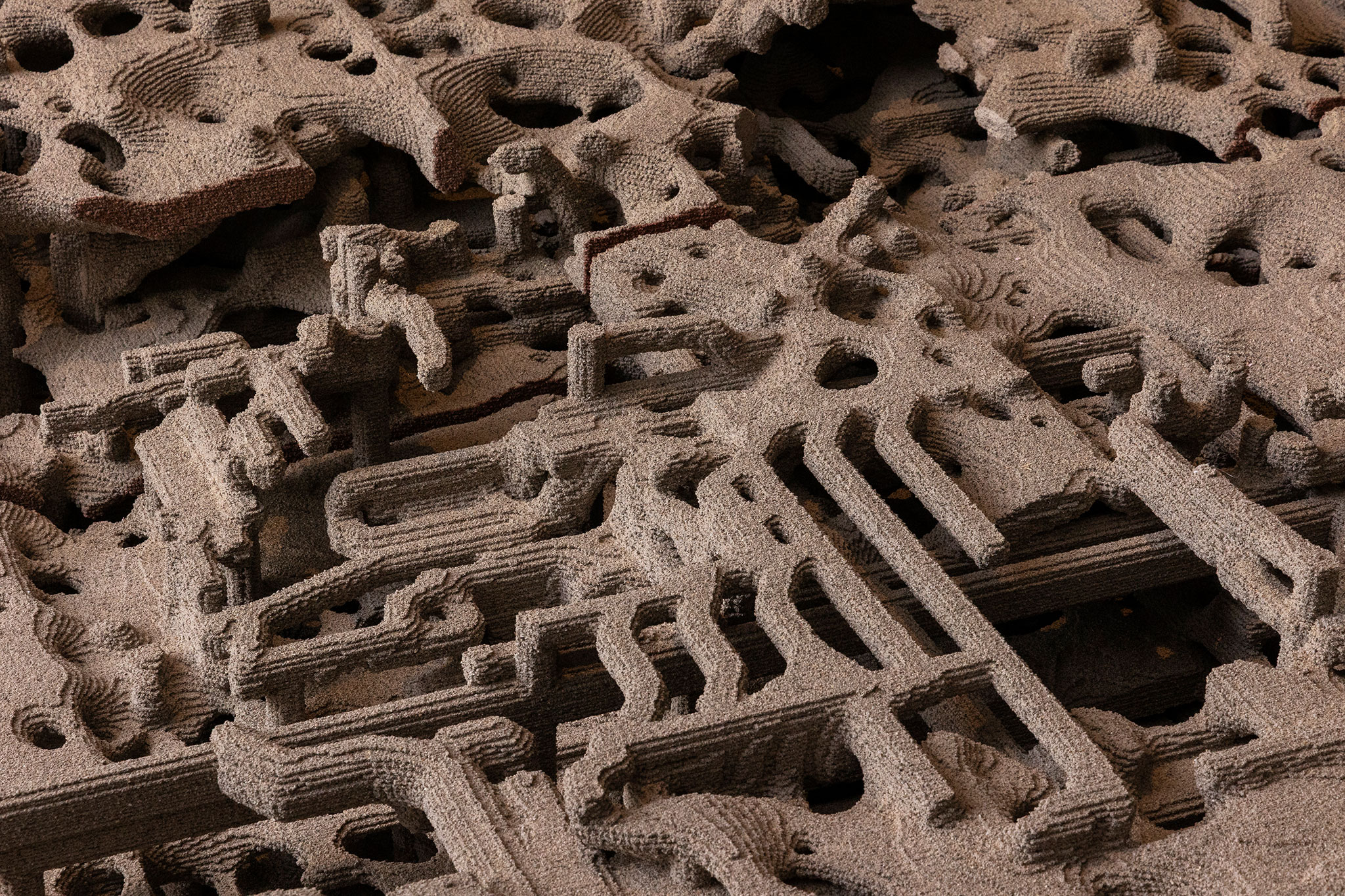
Biotopia: Propagative Structures by MVRDV. Photography by Celestia Studio.
For the artist, form ceases to be fixed and acquires a fluid behaviour in constant development, where it is cultivated and changes according to the environment and the materials.

